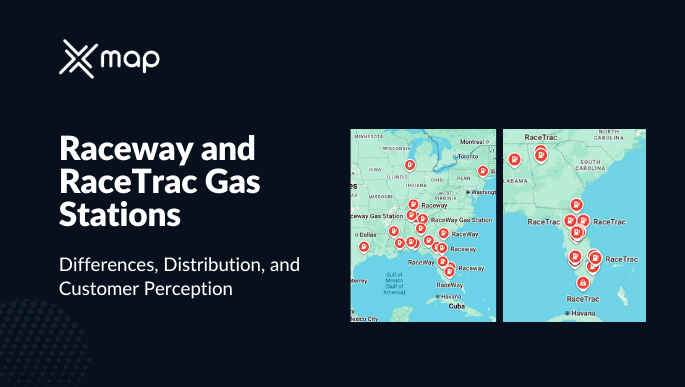Raceway and RaceTrac Gas Stations – Differences, Distribution, and Customer Perception (2025)

- Remove the current class from the content27_link item as Webflows native current state will automatically be applied.
- To add interactions which automatically expand and collapse sections in the table of contents, select the content27_h-trigger element, add an element trigger, and select Mouse click (tap).
- For the 1st click, select the custom animation Content 27 table of contents [Expand], and for the 2nd click, select the custom animation Content 27 table of contents [Collapse].
- In the Trigger Settings, deselect all checkboxes other than Desktop and above. This disables the interaction on tablet and below to prevent bugs when scrolling.
Despite the similar names and logos, Raceway and RaceTrac are not two branches of the same company—a common misconception among U.S. drivers. While they share familial roots and a brand aesthetic, these two gas station chains operate independently with distinct business models, regional strategies, and customer experiences.
In this 2025 deep dive, we’ll untangle the RaceTrac-Raceway relationship, examine how each brand performs in today’s convenience fuel market, and use real data to reveal where they stand and how consumers view them.
Origins: One Company, Two Models
Both brands originate from the same parent company: RaceTrac Petroleum, Inc., based in Atlanta, Georgia.
- RaceTrac: The company’s flagship chain of company-operated stores, built to offer full-service convenience, competitive fuel prices, and clean, modern layouts.
- Raceway: The dealer-operated brand, where independent owners lease RaceTrac-owned properties but operate under the Raceway branding with more autonomy.
This dual strategy enables the parent company to expand reach without scaling internal operations equally.
2025 Footprint: Where Are They Now?
As of mid-2025, RaceTrac and Raceway maintain a strong presence across the Southern United States. While RaceTrac focuses on urban and suburban markets with high-volume convenience traffic, Raceway often fills in rural or underserved pockets.
RaceTrac has grown steadily in larger metro markets, while Raceway maintains a quieter but essential role in covering fuel gaps and off-highway demand.
Business Models Compared
FeatureRaceTracRacewayOwnershipCompany-operatedDealer-operatedBrand ControlHigh (uniform experience)Moderate (varies by dealer)LocationsPrimarily metro & suburban areasRural, small-town, interstateInvestment in UpgradesOngoing & centralizedDealer discretionFoodservice OfferingsExpanding hot food & beverageLimited, varies widely
This split allows the parent company to test innovations at RaceTrac while maintaining broad distribution through Raceway.
EV Infrastructure: A RaceTrac-Led Push
In alignment with sustainability goals, RaceTrac has been steadily piloting EV charging stations at its flagship stores, especially in Florida and Georgia.
Most Raceway stations are slow to adopt EV due to independent ownership and infrastructure costs.
Consumer Perception in 2025
RaceTrac enjoys a stronger overall reputation, driven by brand consistency, service quality, and amenities.
RaceTrac’s branded hot food, beverage bars, and clean bathrooms consistently draw praise. Raceway, while adequate, sees more variability due to lack of standardized operations.
Which One Should You Franchise in 2025?
RaceTrac is not currently open to franchise investors. It remains a tightly held, company-owned chain. However, Raceway is a viable option for entrepreneurs looking to break into fuel retail with a lower initial investment and flexible site management.
Key Considerations:
- Raceway offers greater autonomy but less brand consistency.
- RaceTrac delivers consistent experience but isn’t franchisable.
If you’re eyeing Raceway, location is key. Those near interstates or underserved communities often outperform urban ones.
Final Thoughts: Similar Names, Different Games
In 2025, RaceTrac and Raceway present two sides of the same coin. One is a modern, centrally operated fuel and convenience powerhouse. The other is a flexible, franchise-friendly model offering broad coverage but less predictability.
Understanding these differences is crucial for travelers, franchisees, and market analysts alike.
When pulling into a RaceTrac, expect polished service and solid amenities. When stopping at a Raceway, know that experience can vary—but the fuel will still get you there.
Get in Touch
Whatever your goal or project size, we will handle it.
We will ensure you 100% satisfication.
"We focus on delivering quality data tailored to businesses needs from all around the world. Whether you are a restaurant, a hotel, or even a gym, you can empower your operations' decisions with geo-data.”



